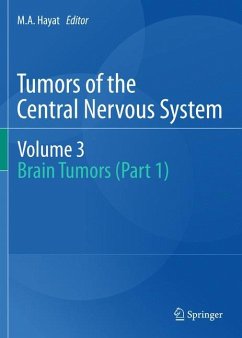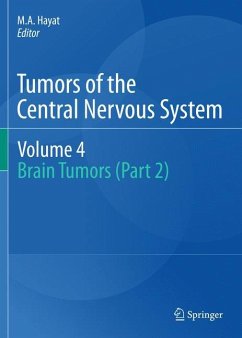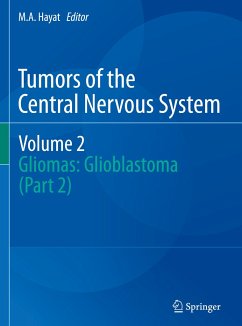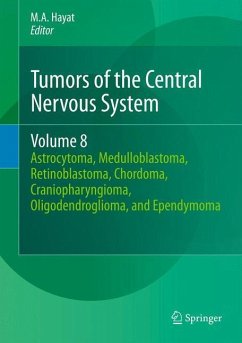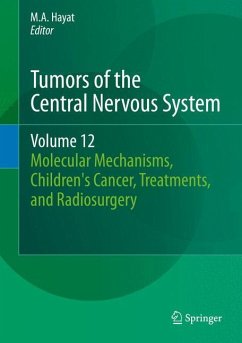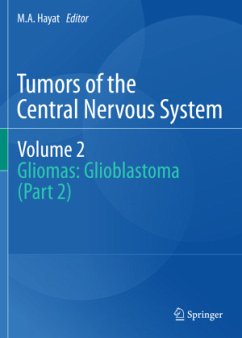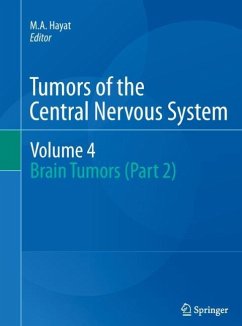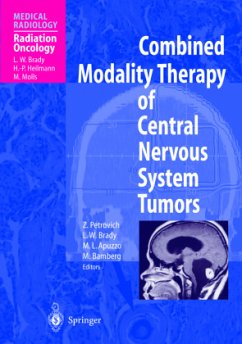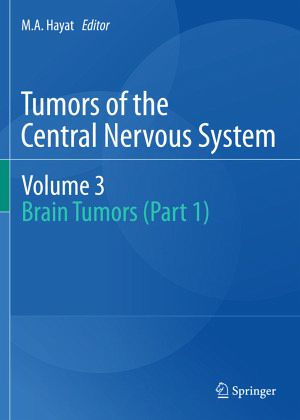
Tumors of the Central Nervous system, Volume 3
Brain Tumors (Part 1)
Herausgegeben: Hayat, M. A.
Versandkostenfrei!
Versandfertig in 6-10 Tagen
151,99 €
inkl. MwSt.

PAYBACK Punkte
76 °P sammeln!
The classification of brain tumors is up-dated using magnetic resonance spectroscopy technology. The role of cellular immortality in brain tumors is reviewed. Tumor to tumor metastases are a common occurrence; for example, , brain metastasis from breast cancer, lung cancer, and renal cancer is discussed. Genetic profiling and treatment (including neurosurgery) of such brain cancers are explained. Breast cancer patients treated with certain drugs (e.g., capecitabine and lapatinib can develop CNS tumors. Role of brain tumor suppressor genes (e.g., NRP/B gene) is pointed out. Biomarkers used to d...
The classification of brain tumors is up-dated using magnetic resonance spectroscopy technology. The role of cellular immortality in brain tumors is reviewed. Tumor to tumor metastases are a common occurrence; for example, , brain metastasis from breast cancer, lung cancer, and renal cancer is discussed. Genetic profiling and treatment (including neurosurgery) of such brain cancers are explained. Breast cancer patients treated with certain drugs (e.g., capecitabine and lapatinib can develop CNS tumors. Role of brain tumor suppressor genes (e.g., NRP/B gene) is pointed out. Biomarkers used to diagnose brain malignancies are explained in detail. A number of imaging modalities used for diagnosing and assessing the effectiveness of treatments of brain tumors are presented. The imaging methods discussed include MRI, PET, CT, MRSi, and SPECT. Also, is discussed the impact of PET using radiolabeled amino acids on brain tumors.



